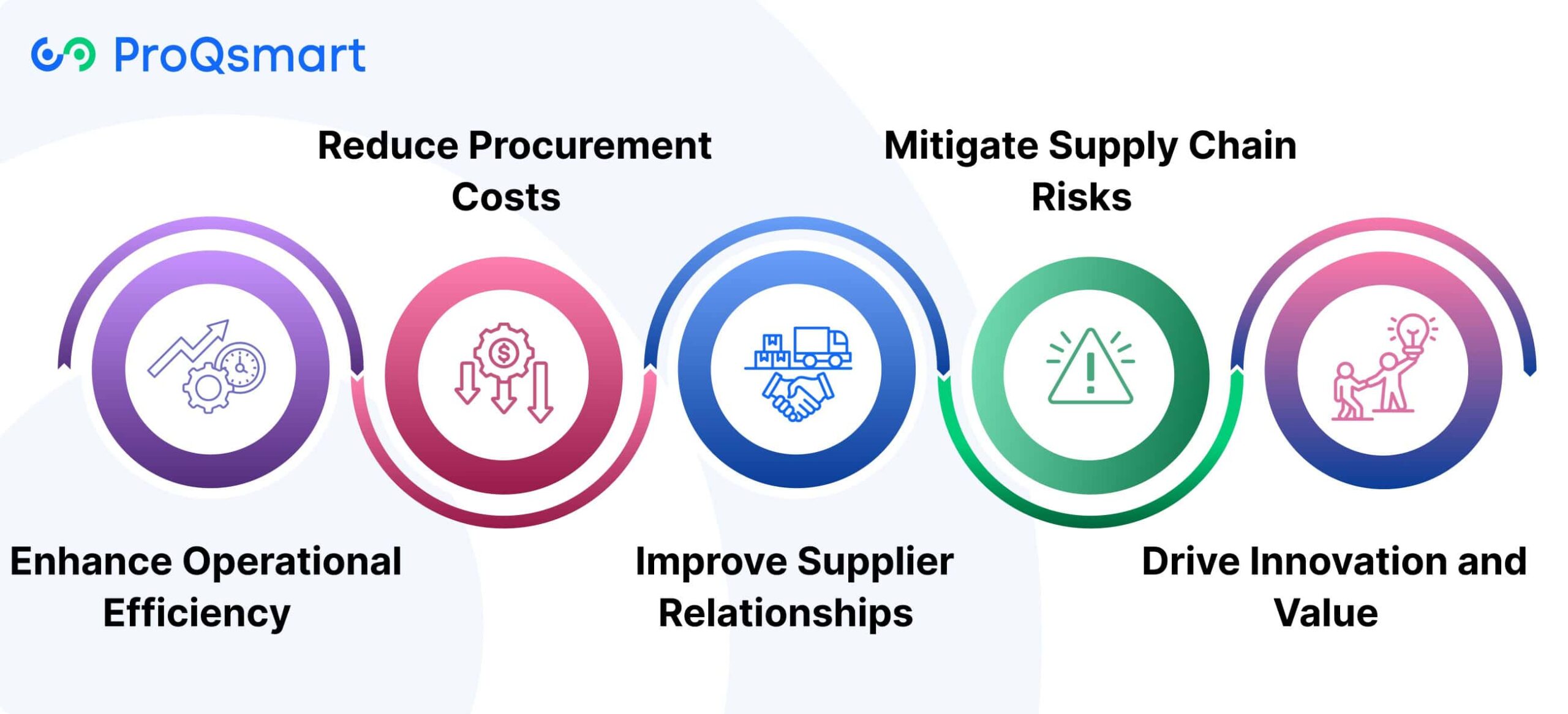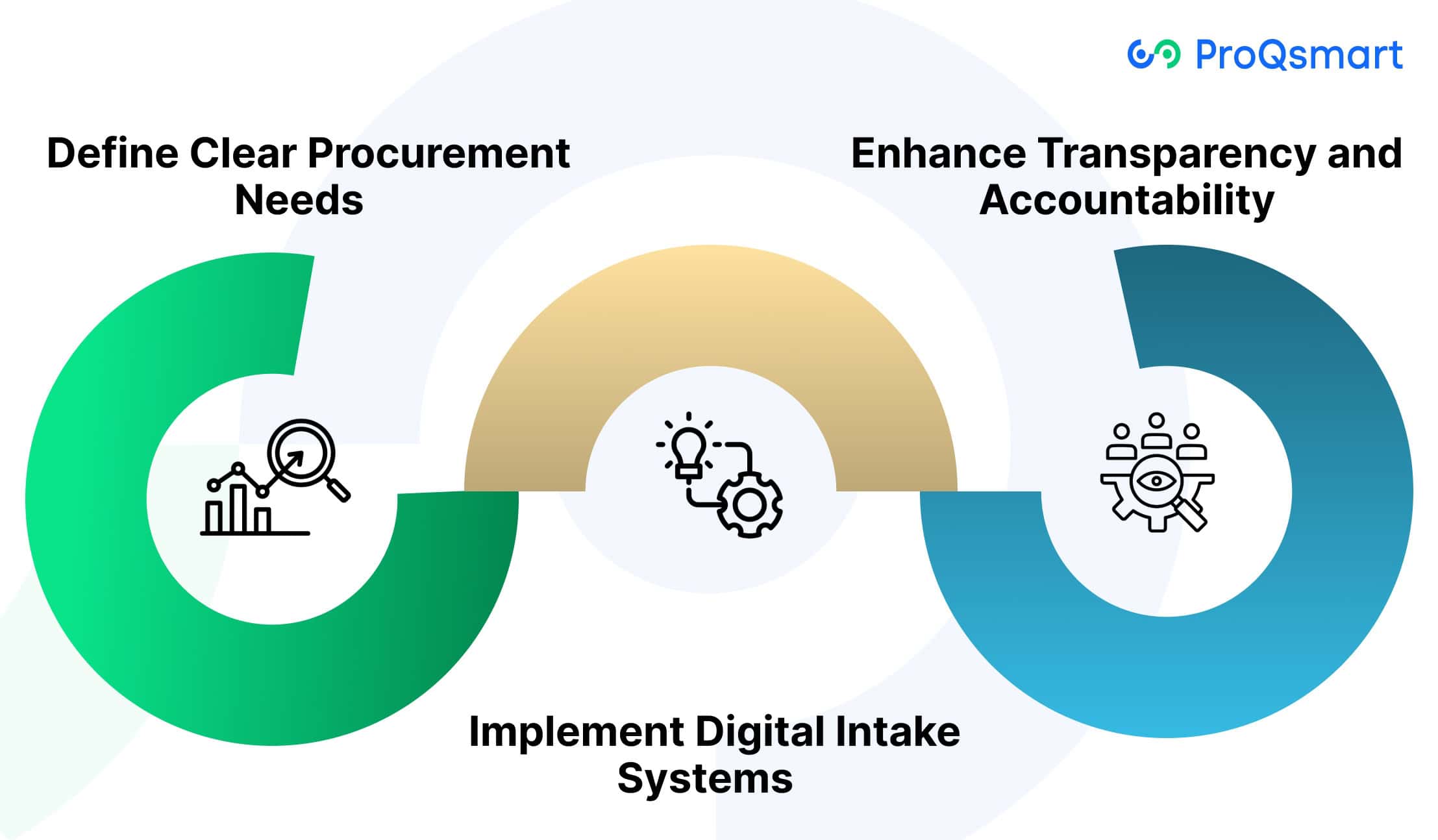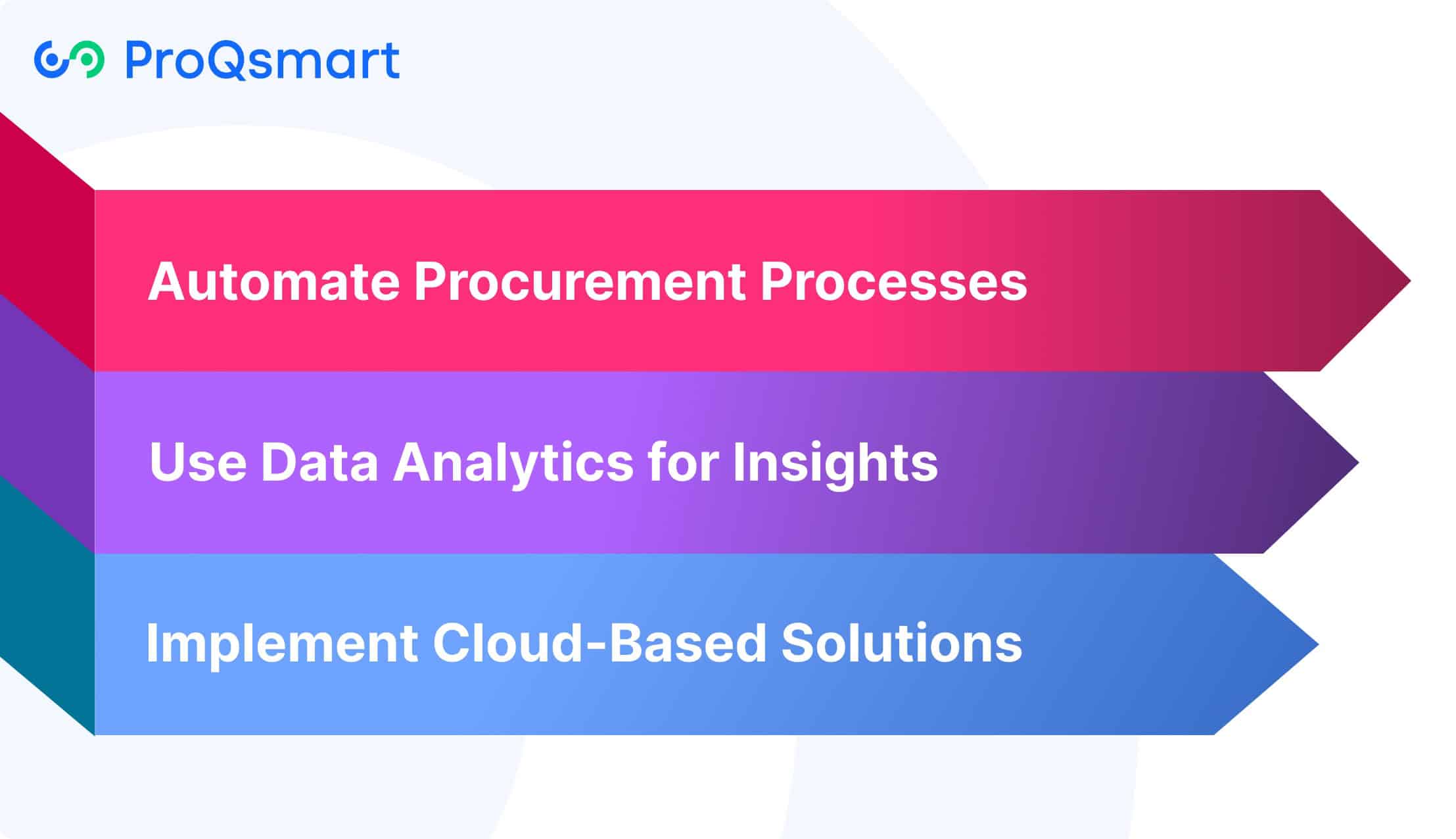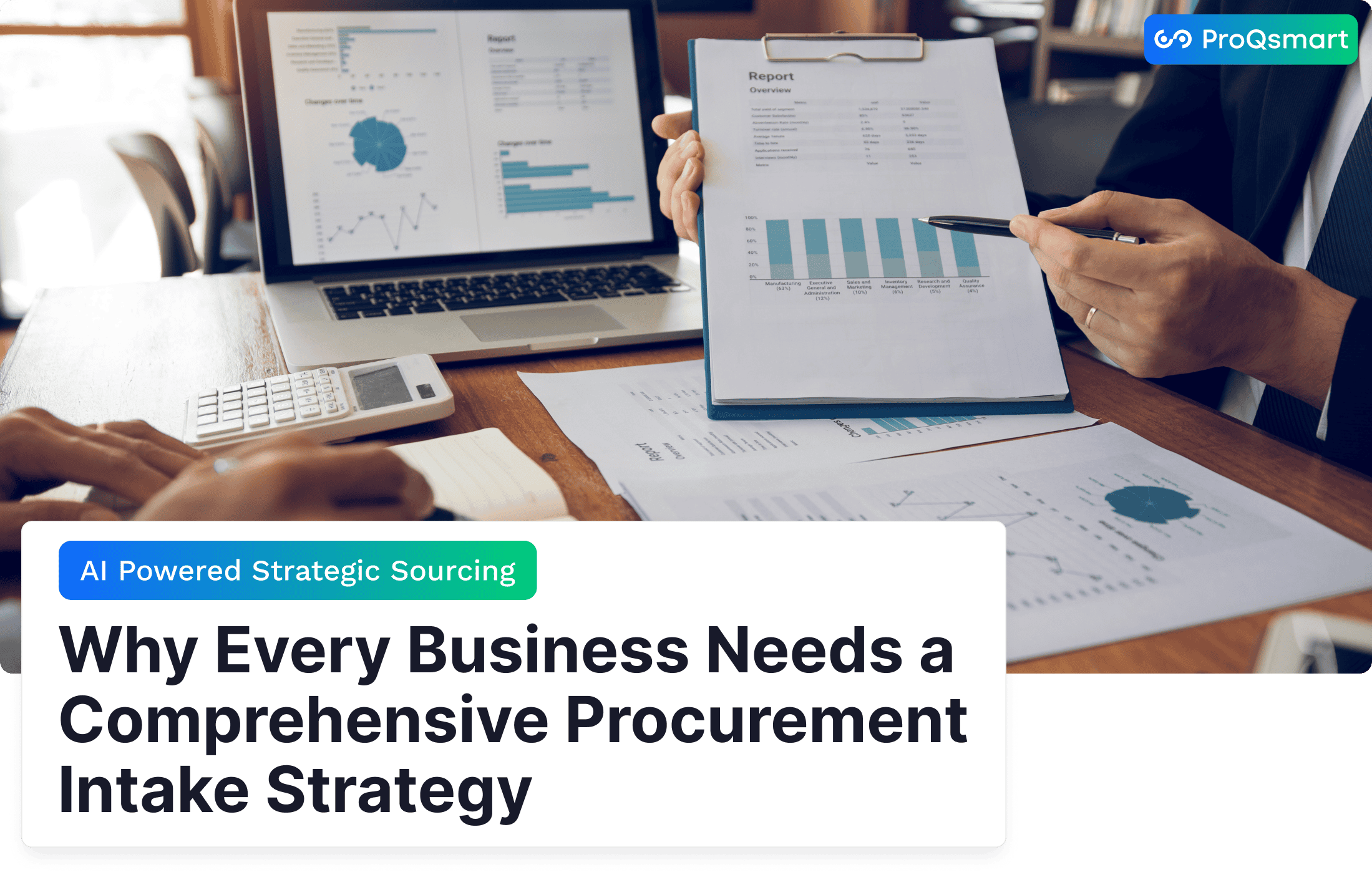A procurement strategy is your tactical blueprint. It is a reflection of how well an organization is obtaining the goods, services and resources that they need to meet their operational and strategic objectives.
The goal is to create a strategic plan that aligns your company’s procurement activities with business objectives while maximizing cost efficiency, supplier reliability, and risk management. An intentional procurement strategy matches strategies to specific sourcing, contract negotiations, or supplier engagement.
This drives public sector enterprises to deliver reliable value and paves the path for continued prosperity. Combining market analysis, demand forecasting, and planning, procurement, and legal regulation compliance, it increases efficiency and enhances decision-making capabilities.
Whether it’s overseeing a complex supplier diversity program or developing a plan for the next tech-driven, cloud-based solution—procurement strategies are instrumental to operational success.
This article will identify a number of actionable insights to improve your overall procurement strategy to achieve the best outcomes possible!
Why Procurement Strategy Matters

Having a long-term, comprehensive procurement strategy in place is the bedrock of efficient and sustainable business operations. A procurement strategy is a documented plan that describes how an organization will conduct its procurement operations, so they support the organization’s long-term goals.
Procurement strategies lead measurable value for organizations by emphasizing the following pillars. They address overall cost efficiency, improve relations with critical suppliers, and increase overall risk management.
1. Enhance Operational Efficiency
By simplifying procurement workflows and reducing bottlenecks, efficiency is increased and performance is enhanced. Automating routine tasks like generating purchase orders or tracking invoices through automation platforms like ProQsmart greatly minimizes costly manual errors.
This process eliminates time-consuming tasks that take your team away from higher-value, more strategic activities. Effective communication within procurement teams and with suppliers is equally critical, as it ensures clarity in expectations and timely resolution of issues.
2. Reduce Procurement Costs
One way to reduce costs is through informed cost reduction — starting with strategic sourcing best practices like competitive bidding and bulk buying. Through a clear understanding of spending patterns, businesses can identify where they are wasting money and refocus their expenditures on things that matter most.
Negotiation still holds a strategic importance—what you’re able to negotiate with suppliers affects the bottom line directly. Evidence indicates that 80% of companies adopting a procurement strategy realize savings of 10–20%.
3. Improve Supplier Relationships
Strong supplier relationships are built on trust and transparency. Frequent feedback meetings and transparent performance criteria ensure that suppliers remain committed and coordinated with the organization’s priorities.
With ProQsmart’s supplier performance monitoring, businesses and public agencies can protect against unreliable suppliers and help encourage innovation.
4. Mitigate Supply Chain Risks
Improving equity through supplier diversification and tracking movements in the market mitigate against possible future shocks. While contingency plans guarantee business-as-usual, ProQsmart’s AI-powered intelligence enhances the procurement strategy framework by elevating risk visibility and response efforts to the next level.
5. Drive Innovation and Value
Further, developing collaborative supplier relationships promotes innovation, particularly during the product development phase. With ProQsmart’s real-time collaboration tools and an effective procurement strategy, they can ensure their businesses remain competitive while quickly responding to shifting market demands.
Procurement Intake Strategy Explained
Procurement intake streamlines purchase requests through a standardized and prioritized process. To do this, it makes sure that each and every need is properly documented, prioritized, and funneled to the appropriate channels.
Develop a smart procurement intake strategy that will help you match your procurement workflows to your org’s priorities. This strategy will lead to a more seamless, streamlined, and efficient system.
This strategy allows teams to identify key process inflection points such as RFI, RFP, RFQ and design-build auctions. It ensures that they use the best approach with the right strategy at the exact time. Taking a simple example of categorizing requests for a business, it’s pretty easy to figure out what IT equipment to plan for, versus what manufacturing materials should be addressed.
Clear and concise request submissions are key to this process. When stakeholders submit clear and comprehensive requests, outlining what is needed, why it is needed, when specifications are needed and with accountability, the turnaround is quicker and mistakes are minimized.
An effective procurement intake strategy invests in ongoing dialogue and relationship-building with stakeholders across the board. With ProQsmart’s smart tools, teams are empowered to automate workflows and integrate with ERPs.
Improve Procurement Intake Strategies

Taking the time to implement positive procurement intake strategies saves time and improves widespread efficiency. In addition, this method fosters better relationships with suppliers, lowers costs, and lessens risk.
Improve intake strategies and internal coordination to better match the organization’s goals and priorities with procurement strategies. This fosters a collegiate and competitive atmosphere that helps propel success.
Define Clear Procurement Needs
Setting clear procurement goals is the first step. By tracking tailored requirements for each type of request, you reduce potential miscommunication and increase accuracy of initial submissions.
Stakeholder engagement is essential. Their perspectives can inform how procurement priorities integrate with functional goals. For instance, working in partnership with your future operations team helps ground you on lead times and quality standards.
Having these needs documented helps make sure that requests stay consistent, helping to make sure all requests align with an organization’s priorities.
Implement Digital Intake Systems
Using technology to your advantage makes intake more efficient and effective. Automated systems – such as procurement software – make processing requests for approval more efficient and track approvals through a centralized system. Usable systems are not merely a plus—they are necessary to improve uptake, prevent mistakes, and improve trust.
By integrating tools that manage data efficiently, such as spend analysis, you unlock deeper insights into supplier performance and market trends.
Review and Refine Regularly
Routine evaluations of your intake process are critical. Gathering stakeholder feedback identifies pain points, while performance metrics highlight areas for adjustment.
Adapting based on these insights ensures your procurement strategy remains agile and effective.
Digital Transformation in Procurement

Digital transformation in procurement is revolutionizing how organizations approach their sourcing processes, facilitating a successful procurement strategy. By tapping into technology-powered efficiency and data-driven strategy, next-generation procurement is fast becoming a key business value creator, aligning with overall business objectives.
Automate Procurement Processes
Automation releases procurement from the tedium of high-volume, administrative tasks such as purchase order creation and matching, invoice matching, and supplier onboarding. By implementing a digital procurement strategy, streamlining these processes, and deploying e-procurement software like ProQsmart as your digital assistant, you can save time and reduce manual errors significantly.
Vetting suppliers with ProQsmart’s automated workflows not only eliminates manual processes but also enhances supplier relationship management by making it easy to analyze and keep track of tasks while maintaining compliance with regulatory requirements using auditable sourcing data. For instance, many generative AI tools are designed to help automate content creation, allowing procurement documentation to be developed in a fraction of the time.
Ongoing oversight of automated systems ensures they continue to serve relevant business purposes. This digital metamorphosis from a cost center into a value-generating function is about adopting an effective procurement strategy that aligns with overall business objectives.
Use Data Analytics for Insights
Data analytics allows organizations to derive actionable insights into their procurement performance. By examining the spending patterns of your entire organization, you can identify significant potential for cost savings and renegotiation with suppliers.
Predictive analytics goes a step further by allowing you to forecast future needs, so you can plan ahead and allocate your budget accordingly. For example, ProQsmart provides a platform from which supplier performance can be consistently monitored, enabling ongoing evaluations that inform strategic, long-term decisions.
Implement Cloud-Based Solutions
Cloud technology improves collaboration between procurement professionals and other departments by offering them real-time access to relevant data. Solutions such as ProQsmart not only integrate easily with current procurement processes but also enhance accessibility and support an effective procurement strategy.
Sustainable and Ethical Sourcing
Embedding sustainable and ethical practices into their procurement strategy is no longer just a nice-to-have; it has become a strategic imperative that organizations must proactively embrace. Given that supply chains represent the largest portion of most companies’ environmental footprints, an effective procurement strategy is a critical lever for driving sustainability.
Integrate Sustainability Criteria
To adopt sustainable procurement, start by establishing clear guidelines. Evaluate suppliers based on their commitment to eco-friendly practices, such as reducing greenhouse gas emissions and using renewable materials.
For example, partnering with a supplier offering biodegradable packaging can demonstrate tangible sustainability progress. ProQsmart’s supplier performance monitoring ensures suppliers meet these standards while automating compliance workflows for efficiency.
Ensure Ethical Labor Practices
Responsible and ethical labor practices are at the heart of sustainability. Implement regular third-party audits to ensure adherence with labor laws and encourage the payment of fair wages.
An active and collaborative strategy, like working with suppliers to introduce training and upskilling initiatives, can drive impactful transformation. Informing procurement teams on the ethics of ethical sourcing will give these values a clearer and more consistent application.
Leveraging tools such as ProQsmart makes the auditing process more efficient and ensures transparency is built in.
Promote Supplier Diversity
Advancing diversity increases social responsibility. Creative approaches to include minority-owned or women-owned businesses can help strengthen diversified supplier networks and lift a community’s underrepresented members.
Regularly monitoring key metrics and maintaining relationships with these small, diverse vendors help to make concrete progress measurable. With ProQsmart’s real-time collaboration tools, engaging with diverse suppliers becomes collaborative and efficient, fostering inclusive, smart procurement.
Align Procurement with Business Goals
Aligning procurement with business goals entails a focused decision to implement an effective procurement strategy that aligns with the overall organizational framework. When organizations integrate strategic procurement practices with overarching business goals, they’ll be best positioned to derive tremendous savings and efficiency.
Collaborate with Stakeholders
Engaging diverse stakeholders early in the procurement planning process is critical. Ongoing engagement with internal stakeholders—from Finance to Operations—ensures alignment around priorities and focuses efforts on the highest-impact projects.
Open communication facilitates a collaborative dialogue to better understand needs and expectations that can open the door to more effective, tailored procurement solutions. For example, using extensive tools like ProQsmart fosters collaboration.
Second, it promotes real-time collaboration and streamlined workflows to make sure the outcomes of procurement best align with what stakeholders need.
Communicate Procurement Value
Showing how procurement’s work contributes to business success builds stakeholder buy-in. Presenting data-driven insights and case studies, such as how digital procurement boosts compliance and reduces risks, underscores its tangible benefits.
Continuously update stakeholders on performance metrics to build support and trust. For example, emphasize the cost savings made possible through platforms like ProQsmart to underscore procurement’s contributions as a key strategic driver.
Support Business Objectives
It’s crucial that procurement is flexible enough to respond to changing needs of the business. Keeping an eye on market trends and using a method to analyze current spending behavior, helps keep strategies aligned with the business environment.
Digital tools like ProQsmart provide visibility, automate workflows, and align procurement with budgetary goals, ensuring sustained alignment with business objectives.
Conclusion
A strong national procurement strategy can be a huge driver of real results. Providing more structure and accountability creates clearer workflows, improved supplier relationships, and more strategic spending. Addressing intake processes, maximizing use of digital tools, and committing to ethical sourcing deliver tangible benefits. Taking these actions boosts your supply chain resilience, cuts costs, mitigates risks, and creates positive momentum toward your company’s objectives. When done the right way, it positions you to remain competitive and better positions your organization to adapt to market changes.
Procurement isn’t just about what you purchase—it’s about creating value throughout your organization. From selecting the optimal suppliers to implementing environmentally friendly practices, every decision counts. By continuously improving every step of the way, you set a precedent and a platform of long-term success.
To explore how ProQsmart can support this transformation, schedule a demo to learn more about our solutions.




